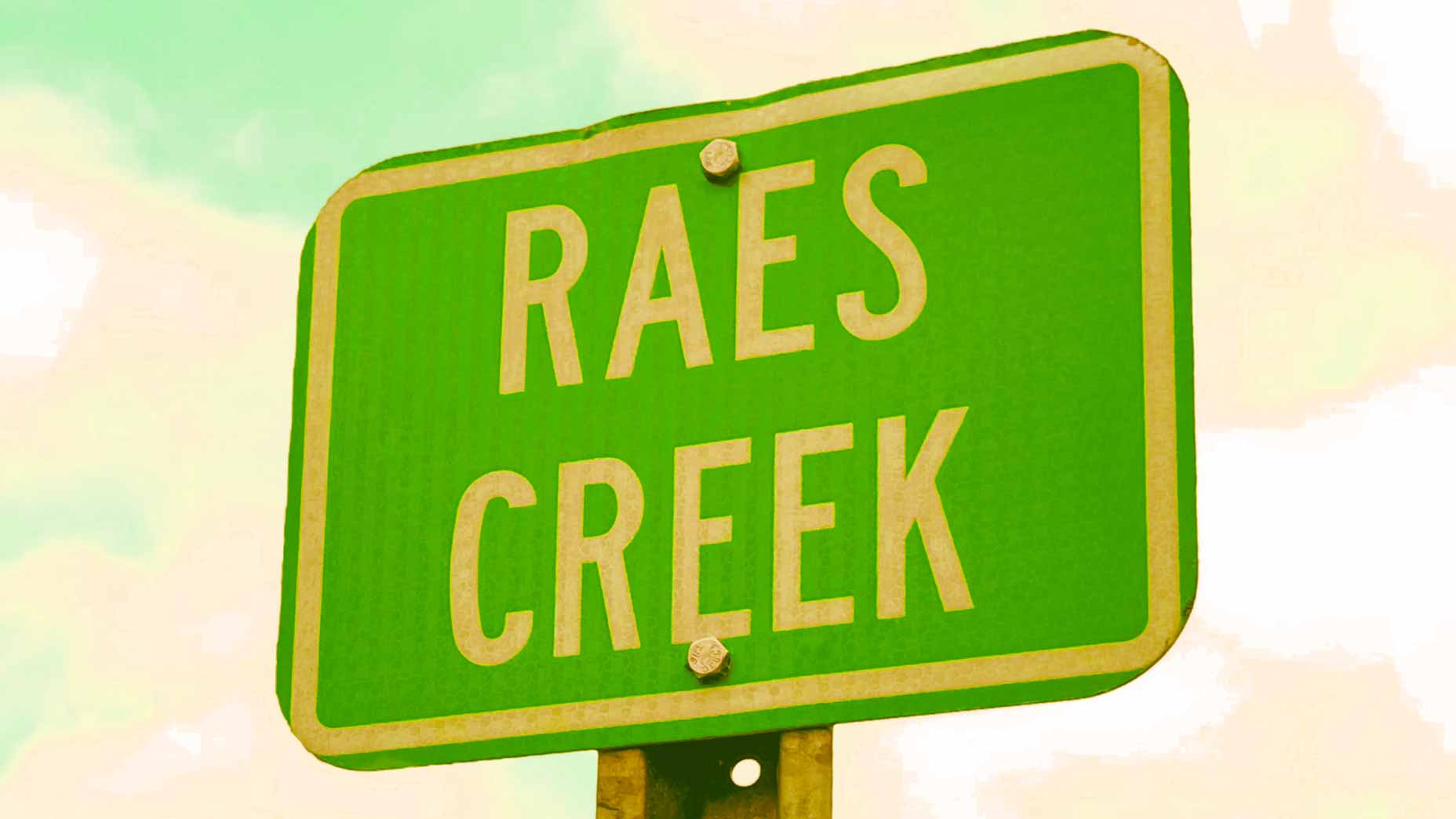Is there gold hiding at Augusta National — in Rae’s Creek?!
- Share on Facebook
- Share on Twitter
- Share by Email

Rae's Creek holds plenty of golf balls. How 'bout gold?!
Tim Conway
AUGUSTA, Ga. — If you want to strike it rich, navigating Augusta’s famous golf club in as few shots as possible is a pretty good way to do it.
But what about Augusta’s gold club?
“We’re recreational gold miners,” says Tim Conway, president of the AGC, local chapter of the Gold Prospectors’ Association of America.. “We work in the creek beds. We always find something — it’s just in small amounts.”
And then he adds this: “Sure, we’ve jumped into Rae’s Creek, looking for gold.”
ONE QUESTION HAD INSPIRED ANOTHER. I’d set out with a simple query — who the hell’s Rae? — and fallen down a mineshaft of intrigue. Wait — gold at Augusta National?!
I got the answer to my first question relatively quickly. Rae’s Creek, the devilish body of water guarding Augusta National’s famous 12th green, the final resting place for countless Masters hopes and dreams, was named for John Rae, an Irish trader and early settler who came to Augusta in 1734 — 200 years before the course’s first tournament.
Rae was not, as far as I can tell, any sort of golfer, although his family came from County Down, home to arguably the greatest golf course in the world. But once he’d arrived in America he quickly became a real mover and shaker in Augusta, amassing thousands of acres of land, building up several businesses and establishing a trading post, grist mill and ferry service near the meeting of the Savannah River and what was then called “Kenyon’s Creek.” (No relation, as far as I know, to Scottie Scheffler’s putting coach.)
As the reach of Rae’s influence expanded, the reach of his name did, too. By 1763, “Rae’s Creek” began appearing on maps. And while he was, by any modern standard, a massively controversial figure — Rae was a slave-owner and was later convicted for murder (and then pardoned, though that’s another story) — his influence was so significant that, a quarter-millennium later, his name lives on.
But in reading about the creek, something shiny caught my eye.
THE MYTHOLOGY AROUND AUGUSTA NATIONAL AND TREASURE stretches back centuries — long before there was a tournament offering nearly $4 million to the winner.
Plenty have speculated — thought the evidence seems scant — that the land now owned by the club was the site of a 16th-century visit from Spanish explorer Hernando de Soto, who spent several years wandering the region on a hunt for treasure and wrote of meeting natives who showed his group “how gold was mined, melted, and refined by his people.”
Renewed attention on the area’s natural resources came in the early 1800s. The Georgia Gold Rush began in 1829, centering mostly around the North Georgia mountains. But gold fever swept the region, right around the time of an 1836 geologic survey conducted by natural science professor, John Cotting. And guess where he found the most promising lead for gold?
“This formation occurs at Skinner’s Mill, on Rae’s Creek,” he wrote. While it was narrow — “in no one place more than 20 rods wide” — he suggested there could be more. “The place most likely in which gold might be found in any quantity, I judge from the appearance of the rock, would be near Rae’s Creek.”
This hardly meant the start of a new gold rush; for his part, Cotting advised strongly against its aggressive pursuit.
“There is nothing in which men discover more ignorance, folly and superstition than in their researches for gold,” he wrote. Time and energy would be better spent focusing on more reliable agricultural pursuits. Still — there’s nothing like the allure of gold.
In 1931, with construction underway on Augusta National, workers found more gold in Rae’s Creek — although, clearly, not enough to stop them from building a golf course.
GOLD IS EVERYWHERE, Conway points out. You can find gold dust in plenty of creeks in plenty of states. But in southern Georgia, you’re unlikely to find big-time money-making nuggets anywhere without some miraculous good fortune. Still — in gold, like in golf, the pursuit of greatness is worth something in itself.
“The best you’ll find are some some small pickers,” he says. “And we define a ‘picker’ as anything you can pick up with your fingers. We just find it’s a cool hobby, and with gold at over $3,000 an ounce, it gets people’s juices flowing.”
In 2001, Tiger Woods won at Augusta National, completing the Tiger Slam and changing the course of modern golf history. That was the same year Conway, now 61, founded his Augusta chapter.
Prospecting was never a full-time gig for Conway, who grew up in the area. He was connected to the Masters for decades; running a commercial photography studio that often worked with players and celebrities in town for the tournament. He’s been on site plenty, too; he remembers when you could walk up and buy your practice-round tickets at the gate. He also knows that now, even as a local, there’s no guarantee you’ll get any. The dynamic has changed. Augusta National has become big, big business. So have its various pieces. Amen Corner. Berckman’s Place. And Rae’s Creek.
A day after we speak, Conway sends me a photo of him with his son, Baillee, in Rae’s Creek — though a safe distance from the property line at the National. I ask if they found anything. Nothing you can see without a microscope, he says.

Conway laughs at the idea that you can make a lot of money looking for gold in Georgia. Mostly, he says, you can make a lot of friends. But they’ve found gold dust here and there, mostly trace amounts, always on the lookout for more.
Is there gold in Rae’s Creek? The answer, almost certainly, is yes. Just not very much.
In my reading — some of which was supplied by the Conways — one more thing caught my eye: a line from David Owen’s “Making of the Masters”. He wrote the following:
“A small spring among the trees between the 13th and 14th fairways is said to yield trace amounts of gold dust after heavy rains.”
And this Masters Monday brought heavy rains. Which makes me think that the week began with a little piece of Amen Corner dusted in gold.
But for guys hoping to make millions this week, staying out of Rae’s Creek remains a much better strategy.
Latest In News
Why Rory McIlroy’s parents missed his emotional Masters win

Dylan Dethier
Golf.com Editor
Dylan Dethier is a senior writer for GOLF Magazine/GOLF.com. The Williamstown, Mass. native joined GOLF in 2017 after two years scuffling on the mini-tours. Dethier is a graduate of Williams College, where he majored in English, and he’s the author of 18 in America, which details the year he spent as an 18-year-old living from his car and playing a round of golf in every state.









